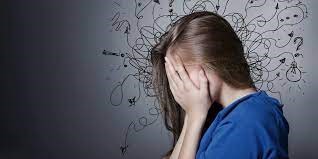Introduction
Anxiety disorders are more common than most people think. The Anxiety and Depression Association of America reports that 40 million adults in the United States are affected by anxiety disorders. That is a significant portion of the population, and it only includes those with anxiety disorders. It does not comprise people who experience anxiety due to everyday stress. The number would be much higher if it did.
What is Anxiety?
Anxiety is a debilitating condition that interferes with day-to-day activities. Anxiety can have different forms for different people and manifest in different ways. For some, it is unambiguous as constant worry and racing thoughts, while others may experience physical symptoms like insomnia, irritability, shortness of breath, or dizziness. Anxiety can take a toll on your physical health too. You may not realize it, but those long worrying periods can damage your heart as well. However, there are things that you can do to help reduce anxiety and manage it more effectively. The purpose of this blog post is to explore different ways to reduce anxiety through relaxation techniques.
Remember, you are not alone!
Here are some relaxation techniques you can use to cope with anxiety:
- Diaphragmatic Breathing: Breathing deeply and focusing on the breath is an effective relaxation technique. The technique involves breathing from the stomach instead of the chest. Being mindful of each breath helps you take your mind away from distractions and is a great way of calming the mind.
- Progressive Muscle Relaxation: This involves first tensing, and then relaxing different muscle groups in the body. The technique helps to reduce muscle tension and promote relaxation.
- Visualization: This involves picturing a peaceful and calming scene in your mind which helps to relax the mind and body. When you’re anxious, close your eyes and visualize a calm and quiet place. It can be somewhere you’ve been before or somewhere you’ve imagined. In conjunction with other anxiety management techniques, mental imagery can be an effective tool for managing anxiety.
4. Meditation: Meditation is the body’s natural self-healing ability. It involves focusing on your breath and letting go of thoughts and worries, thus experiencing states of inner peace and higher states of awareness.
5. Yoga: One form of complementary and integrative medicine is yoga. Practicing yoga can help you achieve a state of peacefulness in your body and mind.
6. Tai chi: It is a gentle way to fight anxiety. Tai chi has been called the art of meditation in motion. It is slow, flowing martial art that can help to improve balance and flexibility and helps to calm the mind and reduce stress.
7. Massage: This involves using pressure and strokes on the body. It helps to relax the muscles and promote overall relaxation.
One of the most important things to deal with when trying to achieve relaxation is that it takes time. There is no ‘quick fix’ when it comes to relaxation. To achieve a state of relaxation, it is necessary to be patient and allow yourself the time you need to achieve it. Another significant thing to keep in mind is that everyone is different. What works for one person may not work for another. Therefore, it is imperative to experiment with distinctive techniques and find the ones that work best for you. Lastly, relaxation is a process. It is not something that you can achieve overnight. It takes time, effort, and practice to achieve a state of relaxation. Once you attain that state, the action is well worth it.
Conclusion: These relaxation techniques are powerful tools that can help reduce anxiety. It is necessary to take time out of your busy schedule to relax so that your body and mind can unwind from the stresses of everyday life, so find what works best for you and make it a part of your daily routine.

